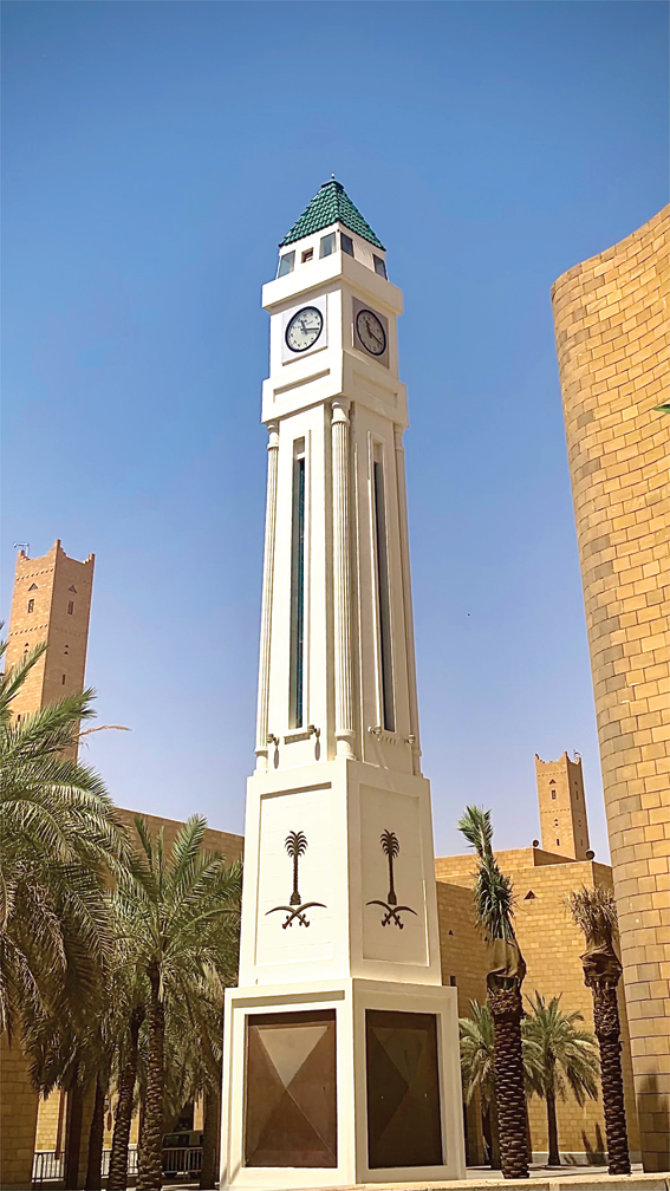RIYADH: “The time now indicates seven in the morning, Riyadh time.”
With this phrase, the residents of central Riyadh used to start their day by hearing a female voice emanating from Al-Safat Clock, located in Al-Dirah market square in the Al-Hukm Palace area.
These days this area, at the end of Al-Thumairi Street, is surrounded by new and imposing buildings. But the clock has remained a focal spot for nostalgia, telling passersby about the mud houses, the alleys that were home to good people, and the stories of the old Riyadh.
Al-Safat Clock, or the “Big Ben of Saudi Arabia” as some called it, was one of King Salman’s achievements in Riyadh while he was the governor of the region.
“It was a unique watch at the time, and there was no parallel in the Middle East except in Beirut,” said social history researcher Mansour Al-Assaf.

The clock began operating in 1966, and it was a topic of conversation among people, an important stop for their gatherings and meetings, and they relied on it to set their watches.
“The German-made Al-Safat Clock and its sound could be heard at a distance of 2 km through four loudspeakers, and it was tuned to conform to the forefront of daily life for Saudis at that time as it was alarming (sounding) every hour, from morning until sunset,” Al-Assaf said.
The supervisor was a Lebanese engineer, and his wife was the voice of the clock. Then, her voice was removed from the clock’s operations.
Al-Assaf said that despite the clock’s beauty, the timepiece caused a problem for some people because of the woman’s voice and the accompanying musical bell. These people objected to the sound of a woman’s voice because they said it was forbidden.
“The extremists raised their objection and a wide controversy took place which forced Prince Fahd Al-Faisal, the mayor of Riyadh at the time, to replace the woman’s voice with a man’s voice,” Al-Assaf explained.
Mansour Al-Shuwaier, a resident who lived during the golden age of the clock, reminisced about the timepiece.
“From my memories of the clock, we used to hear it at a distance of 1 or 2 kilometers, and it was considered a shift and a feature of the city of Riyadh. We called it Big Ben Al-Riyadh. It was even a symbol and a gathering point, as well as for describing the roads. For example, we said go to the north of the clock or west of the clock.”
Al-Shuwaier said that bringing such a clock to the heart of Riyadh was a big help for residents. The clock was a rarity because people at the time did not own watches because of their high cost.
The clock had value when it was placed in the center of the city, helping people to learn about prayer times and organize their day.














